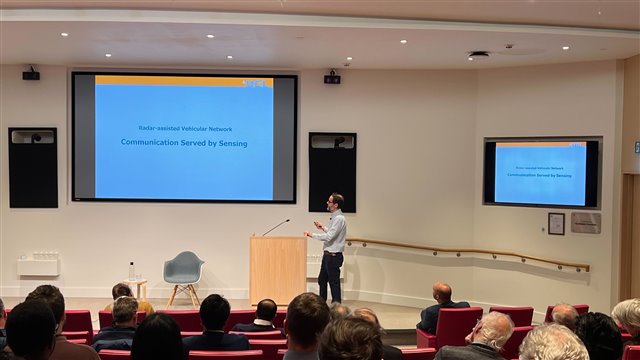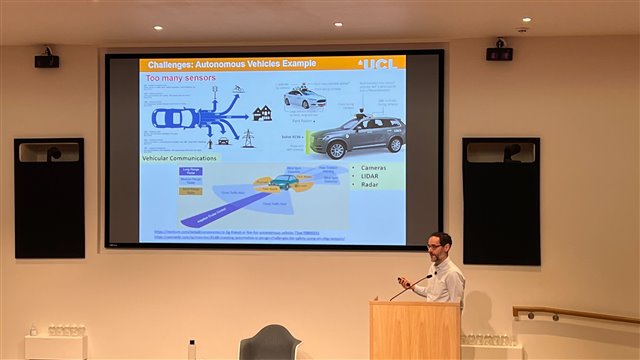Professor Christos Masouros gave a great talk on the development of 6G wireless networks and how they provide an opportunity for combining communication and RADAR via Integrated Sensing and Communications (ISAC).
The talk, hosted at the IET's Savoy Place venue by the IET London Local Network, was brilliantly pitched for a basic audience member like myself, while also including the sort of maths that would excite the true enthusiast. A brief introduction to the history of radio communication and RADAR and lack of feedback between them led onto a more detailed intro to mobile communication and some of the problems with RADAR that have been seen by the aerospace industry due to the introduction of 5G (Aerospace 5G). The need for improvements in sensing, using the example of autonomous vehicles, then led into the meat of the talk.

The simple takeaway message was that the waveform used by 6G hardware can be optimised to be either better for RADAR, better for communication, or a spectrum in-between where it's not optimised for either, but can perform both roles, with varying degrees of performance. Professor Masouros gradually introduced the concept and benefits of Dual Function RADAR and Communications (DFRC) by showing the hardware gain, in terms of co-location, spectrum availability, improvements in security, and the opportunity to have a broader sensing network. This could be shared between aerospace, autonomous vehicles, and people as starting points.

However, to get there the integrated RADAR and communications requires theory, signal processing, and RF design that goes beyond what has been used independently in RADAR or communications. There are standards that have been introduced to cover this, but they tend to be RADAR or comms centric, such as IEEE 802.11ad. At this point Prof Masouros did take the opportunity to intro some of the maths behind optimising waveforms for sensing or comms, but managed to highlight the key variable that guides which has priority. An unfortunate, but necessarily quick introduction to the setup his group uses to test the hardware also showed the results of testing the relationship between data transmission and sensing as the waveform was changed and as the number of antennas was increased. Basically, even when optimised for comms, sensing functionality never dropped to 0 and as the number of antennas increased (from 16), the better the sensing became.
A final discussion about the opportunity for combining RADAR tracking of cars with communications and the even greater improvements once this is combined with beamforming technology, ended with the concommitent need for greater security and Prof Masouros concluding his talk with a look at future possibilities. The Q&A had a few technical questions about software vs hardware upgrades and a decent number on security and privacy implications.
